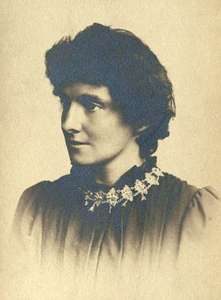Introduction to Edith Nesbit’s life

Writing of Nesbit
Nesbit began writing fiction for children in the early 1890s. She produced more than 60 books for juveniles, as well as some less-successful novels and collections of poetry for adults. Her children’s books are marked by vivid characterizations, ingenious plots, and an easy, humorous narrative style. She wrote both tales of fanstasy or magic, in which children in everyday circumstances are confronted with an extraordinary character or event. Excluding her books for adults, Nesbit published approximately 40 books for children, which included novels, collections of stories and picture books. She also collaborated with others, and she published more books that way.
Nesbit was touted as “the first modern writer for children”. She helped to reverse the great tradition of children’s literature inaugurated by writers such as Lewis Carroll, where children have to escape to a fantasy world and undergo an adventure there. Instead, the characters in her books faced real life problems and encountered tough truths to be uncovered. Nesbit is also credited with having invented the children’s adventure story.